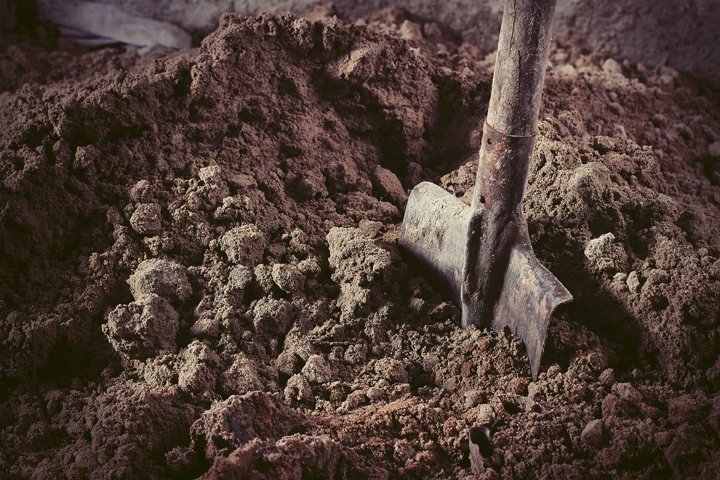Dig a Little Deeper
Addressing damage by sinkhole activity
The Court Decisions column is one of the most popular features of Rough Notes magazine. One reason for this is that the courtroom is where the promises made in an insurance contract often become real. All insurance professionals can develop “what if” scenarios, but until those are tested with an actual loss and a court decision, they remain mental exercises. In this column, the editors of PF&M Analysis, a publication of The Rough Notes Company, will dig a little deeper into the coverage at issue in one of those court decisions to identify a coverage problem and then to provide possible solutions. This decision appears on page 10 of the June 2018 issue of Rough Notes.
The most effective way for home owners to identify potential problems is to arrange for a thorough inspection of the house and property and if necessary obtain insurance and engage qualified professionals to undertake remediation.
This decision involved a couple that was insured under a homeowners policy from Homeowners Choice Property & Casualty Insurance Company. The couple filed a claim alleging that their house was damaged by sinkhole activity. Homeowners Choice denied the claim based on an engineering report. Years later, the couple secured their own engineering report and eventually sued Homeowners Choice when it would not reconsider the claim.
The details of that decision still revolve around a problematic issue: earth movement. Houses are the most significant asset owned by most individuals and families. Whether constructed of wood, brick, earth, cement, stucco or stone, houses sit on foundations that, in turn, are supported by earth. The standard homeowners policy’s coverage is based on the assumption that the foundation of an insured structure is stable.
How does a standard form, in this case Insurance Services Office’s HO 00 03, ed. 0511, address the issue of earth movement? The first mention is under Section 1, Additional Coverage 8. Collapse. The provision responds only to loss to or by the sudden falling down of at least part of a covered building. Coverage is narrow under this provision. Neither gradual movement nor partial state of collapse is covered. Even evidence of imminent collapse does not qualify the structure for protection. Further, collapse is covered only if it results from one of the causes of loss listed under 8.d.:
(1) Perils insured against in personal property (Coverage C)
(2) Hidden decay
(3) Hidden insect or vermin damage
(4) Weight of contents, equipment, animals, or people
(5) Weight of rain that collects on a roof
(6) Use of defective material or methods in construction, remodeling or renovation if the collapse occurs during the course of the construction, remodeling or renovation.
Exclusion 2 of the form states:
Section 1–Exclusions A. We do not insure for loss caused directly or indirectly by any of the following:
- Earth Movement
PF&M shares this analysis of the earth movement exclusion:
Earth movement is defined as an earthquake and includes land shock waves or tremors that occur before, during or after a volcanic eruption. It also refers to landslide; mine subsidence; mudflow; earth sinking, rising or shifting. This source of loss is excluded regardless of whether it is connected to human, animal or natural (force of nature) activity.
Such loss is excluded regardless of any other cause or event contributing concurrently or in any sequence to the loss. These exclusions apply whether the loss event results in widespread damage or affects a substantial area. The last sentence means that the exclusion against earth movement remains in place even if it occurs on a concurrent or catastrophic basis.
An option is available to address one form of earth movement: Form HO 04 99 ed. 10 00, Sinkhole Collapse. When attached to the HO 00 03 it adds the term “sinkhole collapse,” which is damage related to sudden settlement or collapse of earth that supports property that is described and covered by HO 00 03. The form will pay for direct physical loss to covered property because it specifically makes an exception to the HO policy’s earth movement exclusion for “sinkhole collapse.” The HO 04 99’s protection is narrow. Even with the attachment, coverage is not provided for earth activity that is gradual, such as settling or a structure that is weakened because of flaws in construction or materials after construction is complete.
Compounding the problem is the fact that a home owner may face the risk of a sinkhole event but not know it. The seller of a house may not disclose that the property is vulnerable to sinkholes for fear of losing a sale. The most effective way for home owners to identify potential problems is to arrange for a thorough inspection of the house and property and if necessary obtain insurance and engage qualified professionals to undertake remediation.
The author
Bruce D. Hicks, CPCU, CLU, is senior editor for Technical and Educational Products at The Rough Notes Company. He has more than 30 years of property/casualty insurance experience, including personal and small business underwriting as well as compliance duties for several national and regional insurers. Active in the CPCU Society, Bruce served as a Governor of the organization from 2007 through 2010 and currently serves on its International Interest Group Committee.






